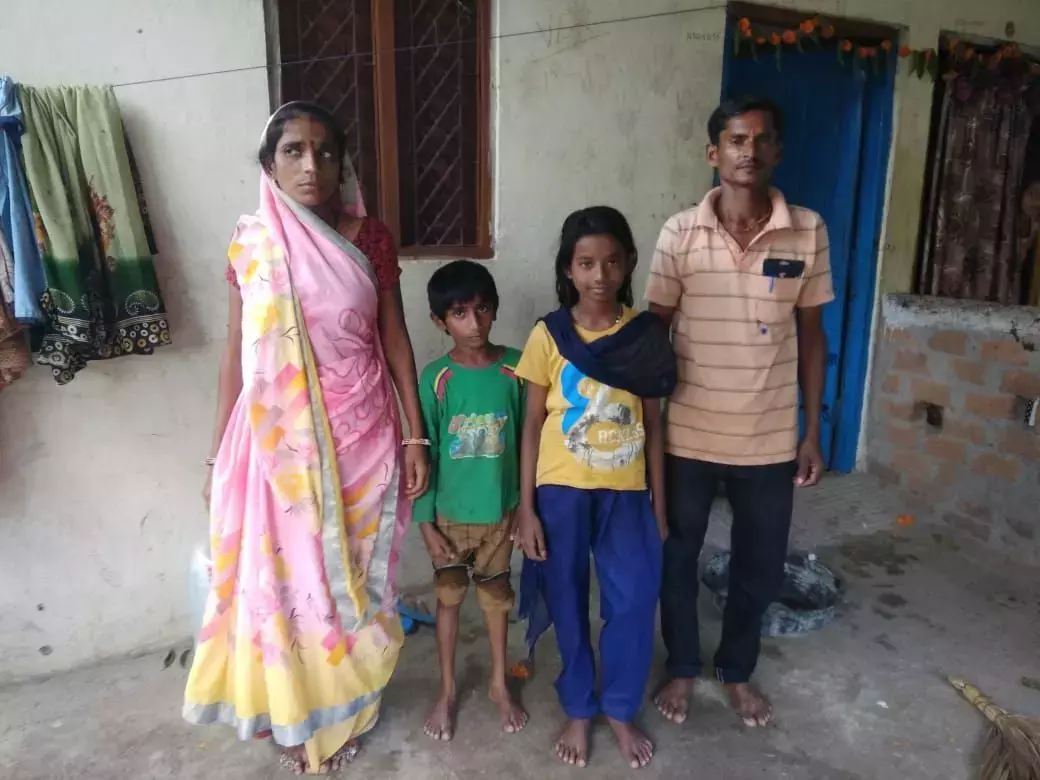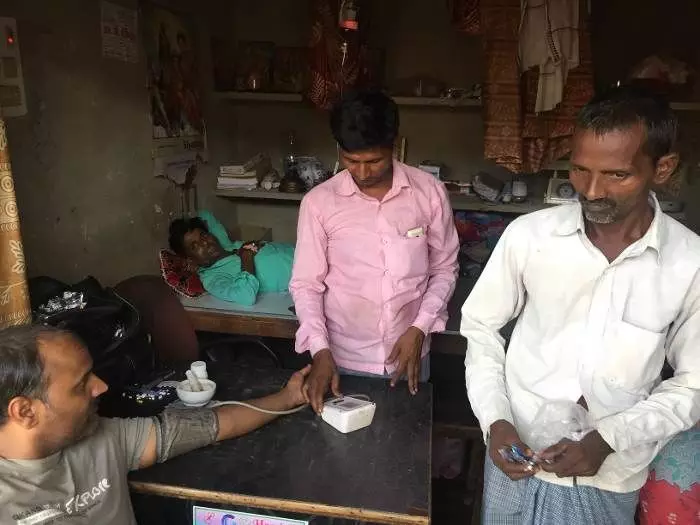“When we give them an IV drip, they feel
better. It instantly energizes them. They feel that they have received quality treatment,”
said a “doctor” living in Dewas district in Madhya Pradesh, who didn’t even
have a degree in medicine.
“We carry 30 ml vials in our jholas
(bags). We treat many using just one vial. We inject them in glucose bottles (or saline) and
give these to the patients using IV drips. This somehow satisfies the patients
and their family members. They go back to their village and tell people that
they are feeling better after receiving the treatment. We use IV drips to treat
fever and many other diseases,” added the quack.
Many living in villages still prefer
going to these quacks who are popularly known as jhola chaap doctors, for whom one-stop solution to every problem is an
intravenous drip (IV drip). Fake doctors are putting patient’s lives at risk due to incorrect use of IV drips, warn experts. According to the World Health Organization, about 57.3% of doctors practicing in India are fake.
The IV drip is given to patients
suffering from dehydration and hypotension, say experts. But, in rural India,
many fake doctors use them to treat fever, headache or even psychotic
disorders.
IV drip to treat
mania
Chagan Baman lives in Chikhli village, 30 kms from Indore
district in Madhya Pradesh. He told Gaon Connection that his wife, Dali Bai, gets violent
and throws things around. She sometimes sets quilts and mattresses on fire. She
doesn’t sleep at night and keeps staring at the ceiling.
Under normal circumstances, she would
have been taken to a psychiatrist, but she was taken to a quack who treated her using an IV
drip.
To understand why fake doctors in
villages use IV drips to treat patients, we spoke to Dr Purnek Patel, a medical
officer in a community health centre (CHC) in Pisawan block of Sitapur district
in Uttar Pradesh. He said: “In villages, fake doctors make patients understand
that if they are given an IV drip, it would help them. It also makes patients
feel better, but the effects last only for a while.”

Dali Bai (left) and her husband Chagan Baman (right) with their children.
Insert iron
needles – this is how they treat mental illnesses
Gaon Connection got in touch with another
fake doctor in Uttar Pradesh’s Sitapur district. We told him about the lady
suffering from mental health in Dewas and asked him how he would have treated
her, he replied that she probably was possessed. “We insert iron needles in a
person’s vein. The evils spirit does not bother such patients as long as the
needle remains inserted,” he said.
When we asked him if he knows about a saline-based drip, he said: “There’s nothing like a saline drip. It’s the iron
needle that keeps the evil spirits away.”
“They do it to make money”
“We
get glucose bottles for Rs 20 in the wholesale markets. It costs us Rs 50-60
per bottle. Some quacks make Rs 100, some Rs 200 to Rs 500,” said the
Dewas-based “doctor”, adding, “We buy these bottles and injections from
wholesale medicine markets. We get these without any bill. They are easy to buy
and are cheaper. Plus, we get a commission on buying these medicines and
bottles.”
He manages to sell 500 drip bottles a
month — around 16-17 bottles a day — targeting people who are not aware of
the ill effects of using an IV drip. When asked if he manages to use 50 bottles
a month, he replied: “Why just 50? I use at least 500 bottles a month. I don’t
even remember how many iron-based bottles I give to patients,” he said while giggling.
When asked to comment, Antima Singh,
who works as an ASHA worker in Barabanki district of Uttar Pradesh, said: “They
do this to make money.”

But then who cares?
Fake doctors don’t know how
much fluids patients would need. They don’t know the proportion of water,
sodium and potassium a person would need, warn experts.
“Every now and then patients come to
me with swollen bodies as they were given drips in excess leading to overloading
of minerals and vitamins in their bodies,” said Dr AK Verma, who worked in a
psychiatry unit in Sitapur, Uttar Pradesh for four years.
These quacks use IV drips to treat several diseases which have adverse effects in patients and cause hypernatremia, high blood pressure, heart failures, kidney damage, electrolyte abnormalities causing organ failure, fluid overload, pulmonary endema causing breathing difficulties and brain damage.
“If the saline drip is given in large quantity,
then the kidneys will have to filter the fluid. The overworked kidneys may lead
to their failure,” said Dr Purnek Patel.
Dr AK Verma, who is also a medical
officer at a neuro clinic in Sitapur district of Uttar Pradesh, believes that
this has been a persistent problem in rural areas. “People here don’t know
where they should go for treatment and which doctor to contact. Even the quacks
don’t know where to refer to these patients.”
“If a woman is suffering from anaemia,
there is already pressure on her heart. If she is given saline, it will add a burden
to her heart. It would increase the chances of heart failure. Although these drips
may not have any negative impact in case of neurological problems, overuse of
such drips affects the electrolytic balances in the body.”
According to Dr Shailesh Prasad Singh, a civil surgeon based in Muzaffarpur, Bihar, IV drips have no side effects. “IV
drips are given through veins. There are no side effects of using an IV drip
unless given in excess.”

According to the World Health Organization, about 57.3% of doctors practising in India are fake
Do these
“doctors” know enough about IV drips?
When Gaon Connection asked the quack
based in Uttar Pradesh, if IV drip should be given to a friend having a headache,
he went on to add that we may use a Ringer’s lactate bottle, locally known as
RL bottle. He prescribed medicines that are used to treat gastric problems and
not a headache.
“You need to buy Pantop (used to treat
acid reflux, cough and heat burn), Aciloc (a painkiller used to treat
intestinal and stomach ulcers) and Eldervit (used to treat intestinal problems,
infections and even cancer) and then inject these in the RL bottle,” said the quack
very confidently.
When we asked Dr Purnek, the medical
officer in a CHC, if a saline drip is needed in case of a headache, he said: “A
person having headache could be suffering from migraine or hypotension. In
cases of hypotension, we may suggest an RL bottle, but not otherwise.”
Pushpendra Vaidya (Madhya Pradesh) and Mohit Shukla (Uttar Pradesh) contributed to this story.



















